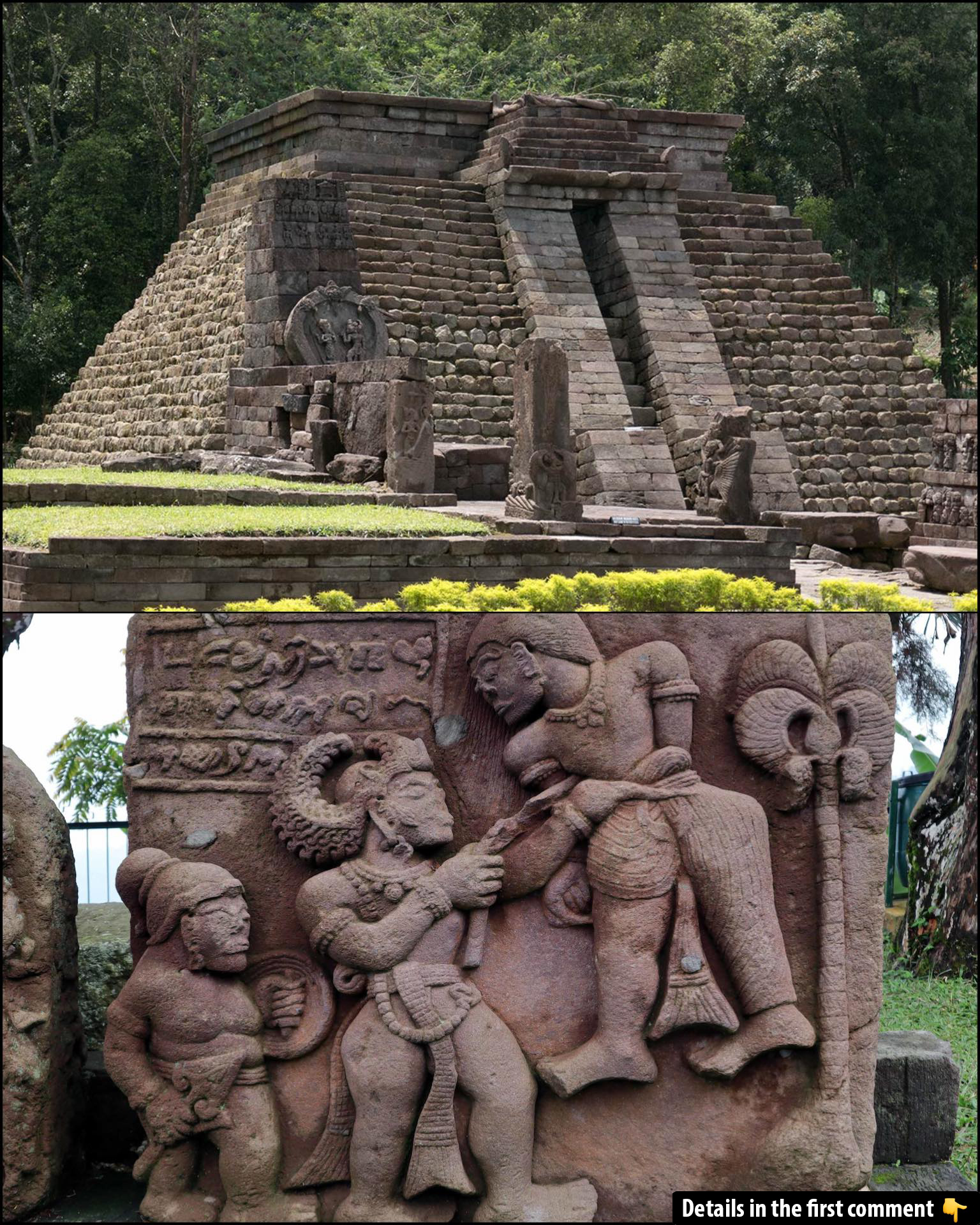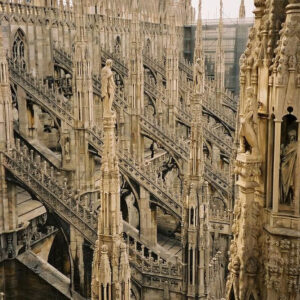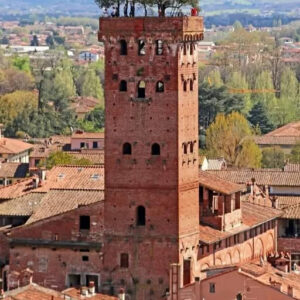Tucked away in the lush foothills of Mount Lawu, Java, the enigmatic Candi Sukuh temple rises as a unique landmark of Indonesia’s ancient past. Unlike any other temple in Southeast Asia, its striking pyramid shape and mysterious carvings spark curiosity and intrigue. Dating back to the 15th century, this hidden gem reflects a fusion of spiritual beliefs, cultural evolution, and architectural innovation, offering a rare glimpse into the complex history of Java.
A Unique Architectural Style: The Pyramid of Candi Sukuh
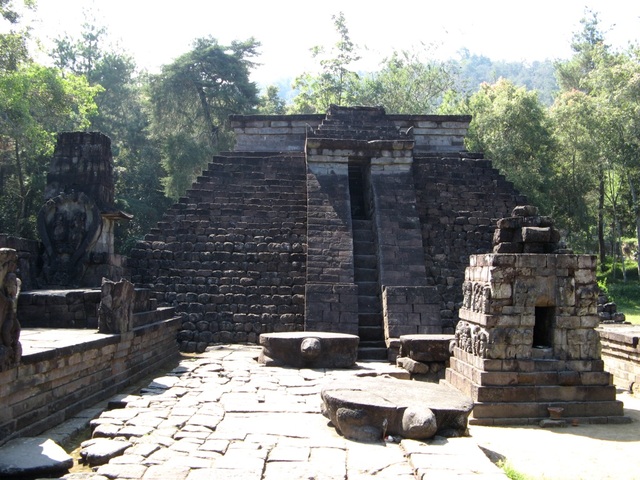
The most eye-catching feature of Candi Sukuh is its unusual pyramid shape, which sets it apart from the typical Hindu and Buddhist temples in the region. Standing 10 meters tall, the pyramid is constructed from volcanic andesitic rocks and is surrounded by three distinct terraces. Its design, reminiscent of the pyramids found in Maya civilizations in Yucatán, Mexico, is a rare architectural occurrence in Southeast Asia. This truncated, trapezoidal pyramid is more than just a geometric structure; it symbolizes ancient beliefs and cosmological concepts that remain shrouded in mystery.

Several myths and legends have been associated with the pyramid’s design. One such legend claims that the pyramid represents Mount Meru, the mythological abode of gods and ancestors. In another story, it is believed to depict Mount Mandera, the location where Vasuki, the king of serpents, allowed gods and demons to use him to churn the ocean of milk and extract the elixir of immortality.
These stories, though speculative, add an aura of mystery to the pyramid, further enticing those who wish to understand its deeper significance. The pyramid remains an important focal point at Candi Sukuh, standing as a symbol of the spirituality and beliefs of the people who once inhabited the region.
Video
Watch this video to explore Candi Cetho, located at the foot of Mount Lawu, and uncover the civilization that flourished in this sacred and historical site.
Cultural and Religious Significance of Candi Sukuh
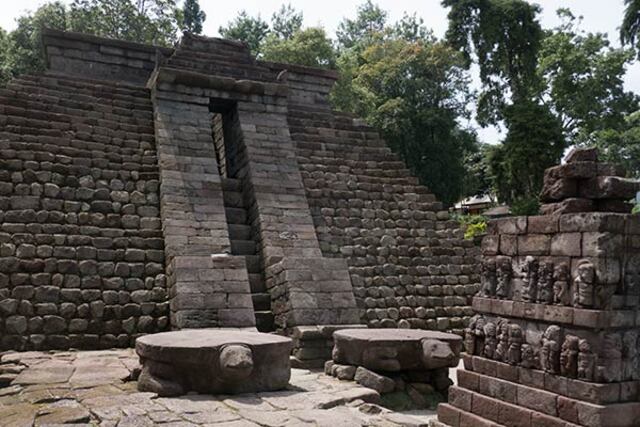
Candi Sukuh is not just an architectural marvel; it is a symbol of the religious and cultural practices of the time. The temple is believed to be a remnant of pre-Hindu animism, reflecting the spiritual evolution that occurred as the Majapahit Empire began to decline. Unlike other Hindu temples in the region, Candi Sukuh incorporates symbolic elements of fertility, life, and death, represented through its various sculptures and carvings. Hinduism in Java, influenced by Tantric beliefs, provided the temple with a distinct character, blending the divine with the human experience.
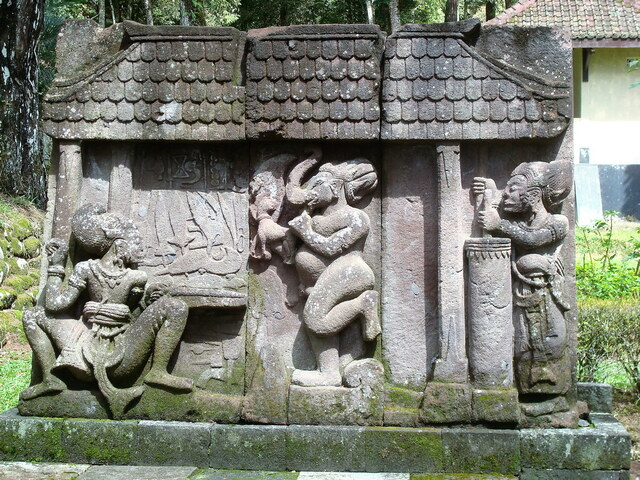
At Candi Sukuh, visitors can find numerous Tantric symbols, many of which are associated with sexual themes. These symbolic carvings emphasize spiritual liberation, a central tenet of Tantric philosophy, and illustrate the deep connection between body, soul, and the universe. The most striking of these carvings is the depiction of the union of male and female energies, represented through stone carvings of a linga (phallus) entering a yoni (vagina), an image that has given Candi Sukuh its reputation as the “erotic temple.”
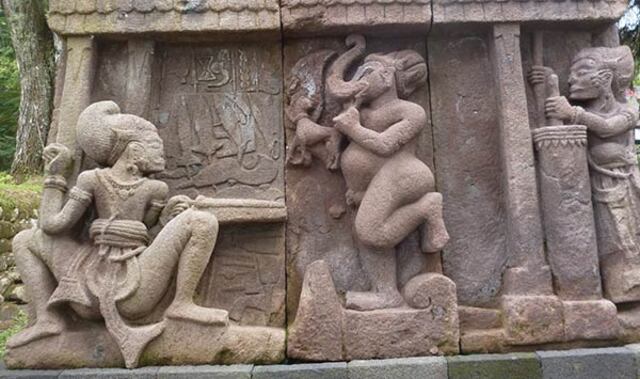
The presence of erotic symbols at Candi Sukuh is not simply a reflection of the sensual; it is a profound representation of the spiritual and physical union necessary for transcending worldly attachments and attaining enlightenment. The carvings of deities such as Bhima, the warrior hero from the Mahabharata, further deepen the temple’s significance, as Bhima is portrayed in scenes depicting spiritual transformation.
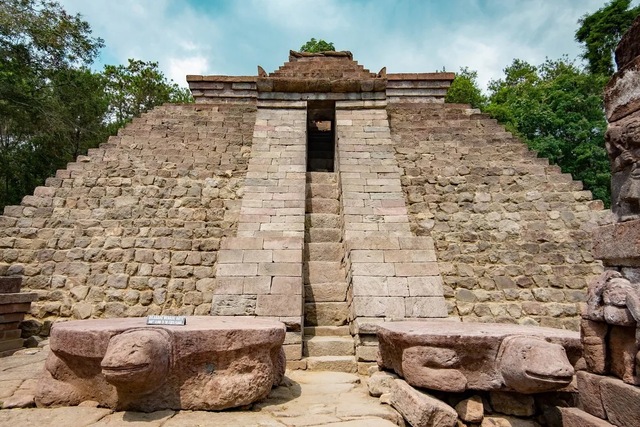
The Enigmatic Sculptures of Candi Sukuh
Perhaps the most fascinating aspect of Candi Sukuh is its remarkable collection of sculptures. Among the most famous is a metal forge scene depicting Bhima, Arjuna, and Ganesh, where the three figures are engaged in the crafting of a powerful weapon. This scene holds considerable spiritual significance, as in Hindu-Java mythology, the act of smithing is linked to both physical and spiritual transformation.
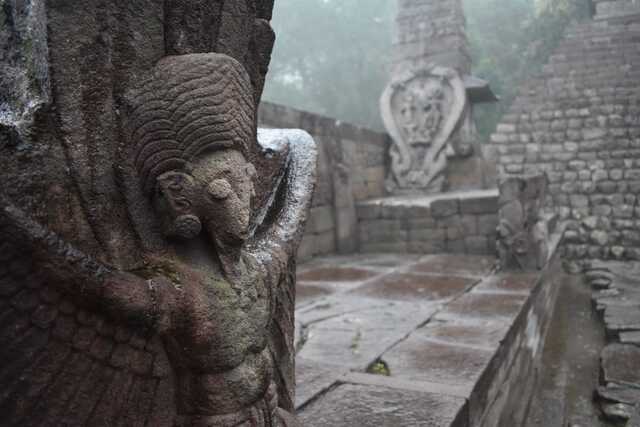
The smith, like the blacksmith depicted in the sculpture, represents the process of refining and purifying the soul. The use of fire, symbolic of the god of fire and associated with purification, imbues the scene with deep religious and philosophical meaning.
Additionally, Tantric practices, which have long been a part of Southeast Asia’s spiritual heritage, are represented through Ganesh’s dancing figure, symbolizing spiritual crossing and transformation. The sculpture shows Ganesh, typically known as the remover of obstacles, engaged in an unusual pose, his genitals exposed, wearing a rosary of bones, and holding a small animal, further exemplifying the intersection of spiritual beliefs and Tantric practices.
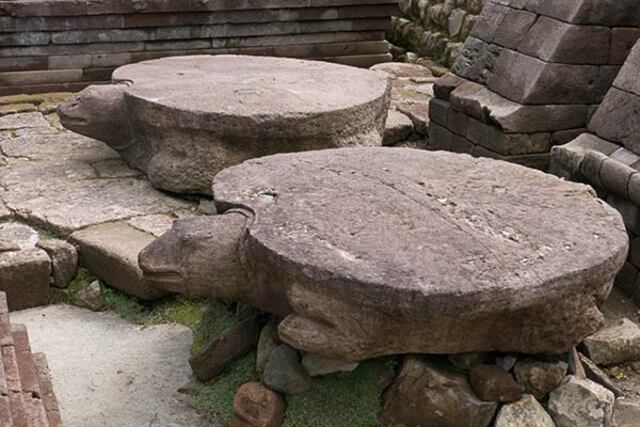
The Decline and Rediscovery of Candi Sukuh
The fate of Candi Sukuh mirrors the history of the Majapahit Empire and the broader changes in Southeast Asia. For much of its history, the temple lay abandoned, its significance obscured by time and the rise of new religious and cultural systems. In 1815, Sir Thomas Raffles, the ruler of Java, visited Candi Sukuh and recorded his findings of the temple in poor condition, with many statues lying on the ground and decapitated. It is likely that the destruction occurred during the Islamic invasions of the 16th century, a period of religious upheaval that saw many of the ancient Hindu temples damaged or abandoned.
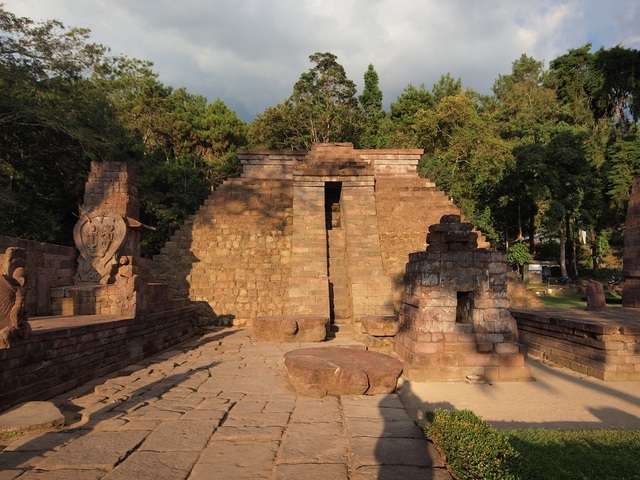
Despite these challenges, the rediscovery of Candi Sukuh in the 19th century sparked renewed interest in its enigmatic features. Through excavations and research, archaeologists began to piece together the temple’s history, uncovering its distinctive architectural and sculptural elements. Over time, Candi Sukuh has grown in stature as an important cultural and historical site, one that highlights the intricate connections between religion, art, and architecture in Southeast Asia.
Modern Efforts to Preserve Candi Sukuh
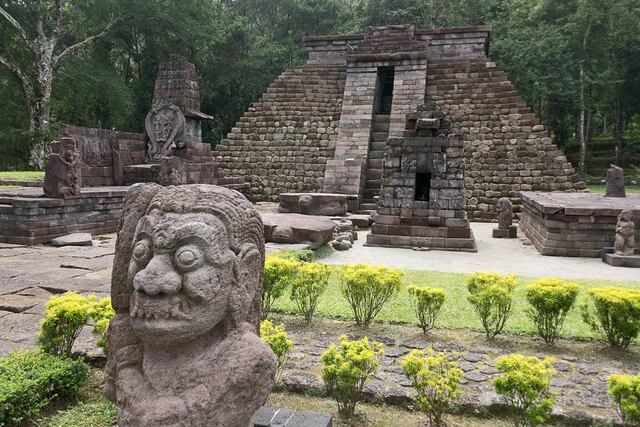
In the modern era, significant efforts have been made to preserve and restore Candi Sukuh. Between 2014 and 2017, the Indonesian government conducted extensive renovations to safeguard the temple from further deterioration. This reconstruction, however, was not without challenges. The original foundations, built on loose river sand and stones, had begun to sink, and the temple’s location in a seismically active region posed further risks. Nevertheless, the dedication to preserving the temple’s unique features has ensured that Candi Sukuh continues to attract visitors from around the world, eager to explore its rich cultural history.
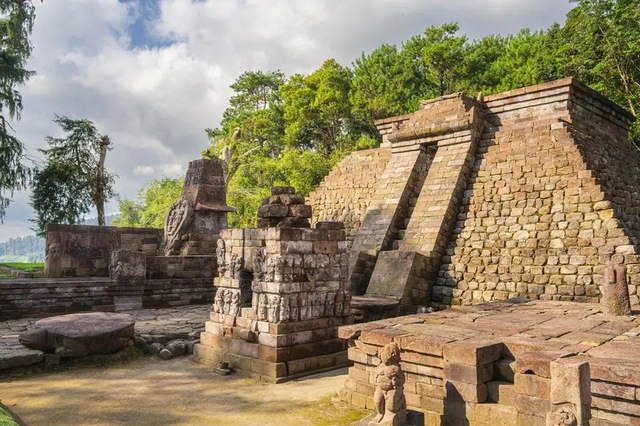
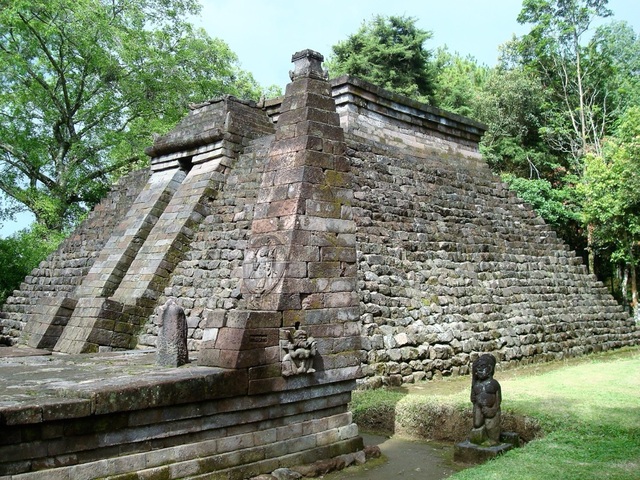
Video
Tune into this video to uncover the myths and stories behind Candi Sukuh, exploring its unique history and cultural significance.
Conclusion: Candi Sukuh as a Testament to Indonesia’s Rich Heritage
Candi Sukuh stands as a testament to Indonesia’s rich cultural and spiritual heritage. Its unique architectural style, enigmatic sculptures, and connection to Tantric practices offer a fascinating glimpse into the history and beliefs of the people who once inhabited Java. Despite centuries of neglect, the temple has endured, symbolizing the resilience and beauty of Indonesia’s ancient past.
As modern restoration efforts continue, Candi Sukuh remains a beacon of Indonesia’s historical landmarks, attracting scholars, tourists, and spiritual seekers alike to explore its mystical and timeless significance. Through the careful preservation of its structures and the continued study of its intricate carvings, Candi Sukuh will continue to inspire future generations in their search for knowledge, enlightenment, and understanding.
